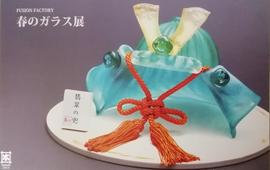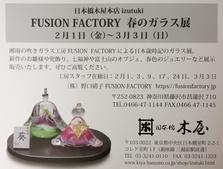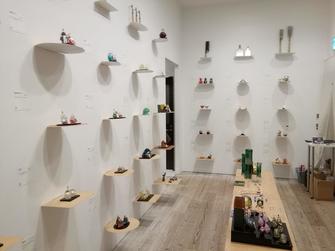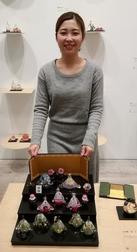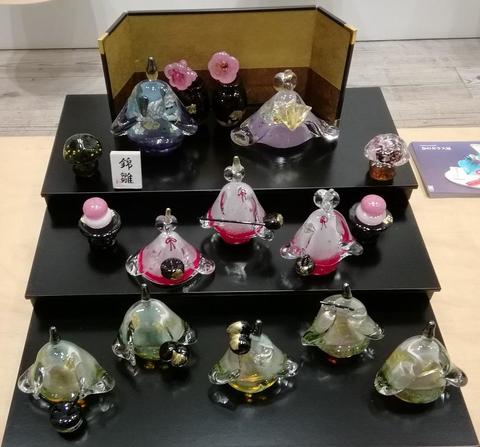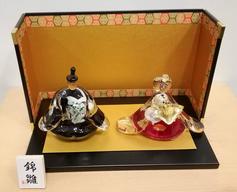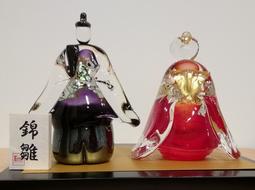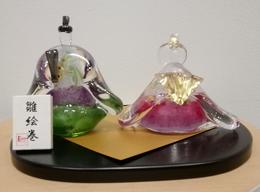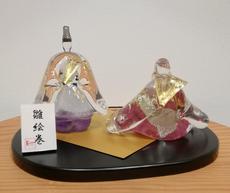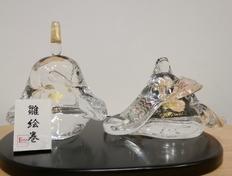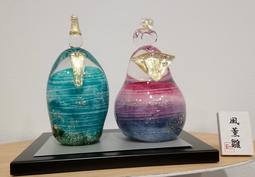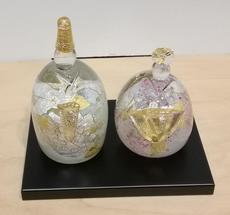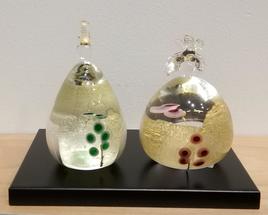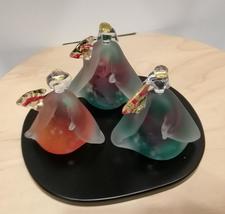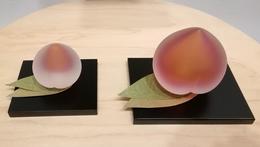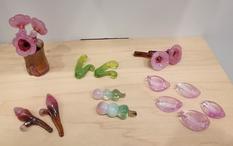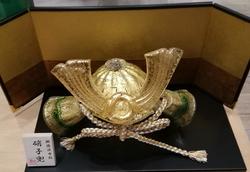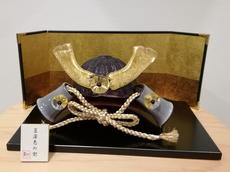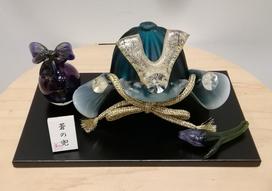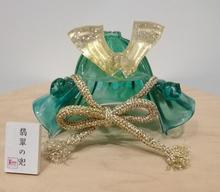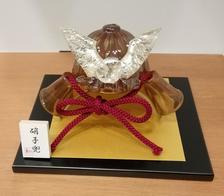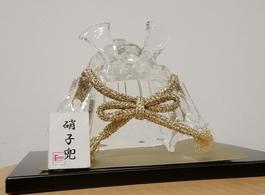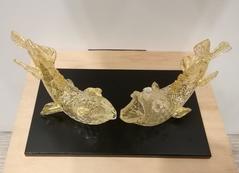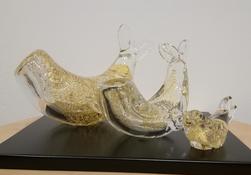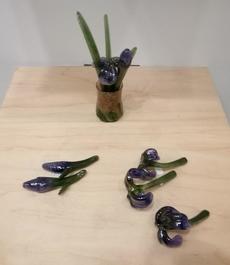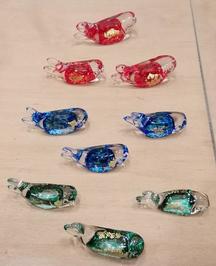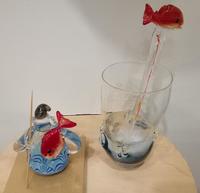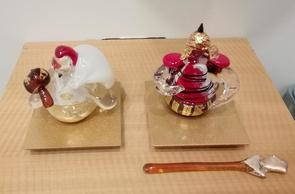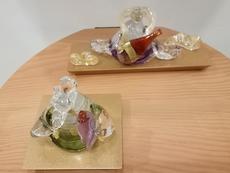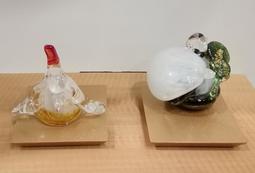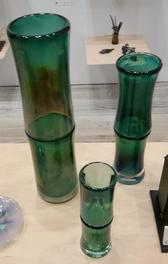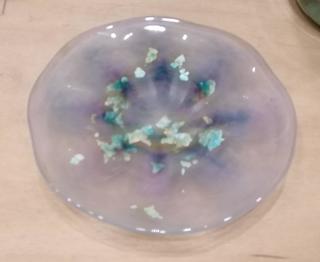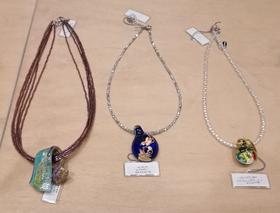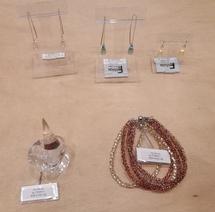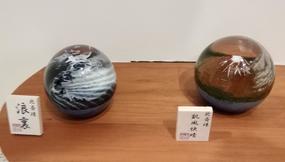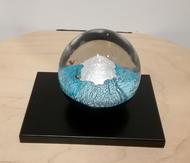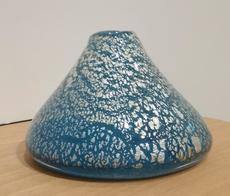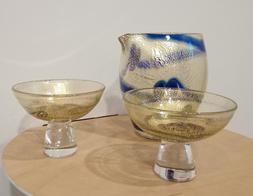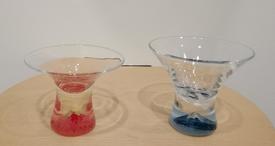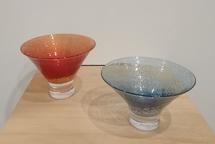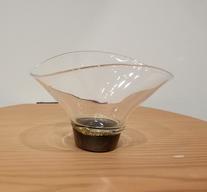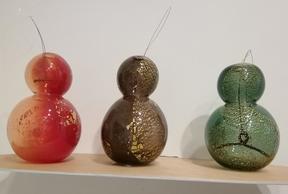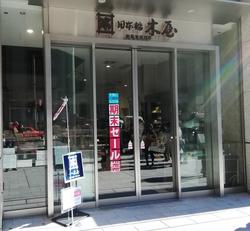Hello. This is a new correspondent, Hanes.![]()
![]()
Continuing from the last time, I would like to focus on Chuo-ku that Sidmore saw!
■Impression of Edo (p. 75)
This section describes the scenery of Tokyo, where the remnants of Edo remain.
The frank and honest impression from overseas people at that time is spelled out.![]()
"The scenery of Tokyo, which I see for the first time, disappointing travelers, just like the first scenery of Yokohama. Ginza, the main street in this commercial district begins with a bridge on the opposite side of the Shimbashi railway station and extends straight to Nihonbashi, the northern end of the Tokaido. Nihonbashi is the starting point of transportation for national distance measurement. In the Oita part of the road, moon-like buildings, curbs, and green shades are lined up based on foreign countries, but the railway carriage [carriage iron] echoes the pop-up sound, and the light carriage runs rattles. , The scenery of the city is quite inconsistent. This is not Oedo, which tourists dreamed, but is not a big city of the East. The plaster walls, wooden cylindricals, glamorous windows of the shops, and the stupid mountains of imitation, all the tourists face the way."
When I first read it, "I don't have to say so much."...![]() "I felt somewhat sad,"
"I felt somewhat sad,"
For those who are familiar with foreign landscapes, such harsh impressions may be appropriate.
And again, when we eat ramen and sushi overseas, we eat ramen and sushi.
"I'm sorry that the noodles are spreading...."The vinegared rice part is dry and hard to eat...."I feel like
Finding Chinese elements in buildings and gardens that are Japanese style or Japanese style.
"That's something different from the image....![]() I think this feeling is something that I experienced with Sidmore.
I think this feeling is something that I experienced with Sidmore.![]()
Shedmore continued to say a word after this.
"But there are a lot of secret places unique to big cities, unforeseen excavations that are unrelated to the changing times, and you can get pure Japanese treasures that are enough to compensate for your initial disappointment."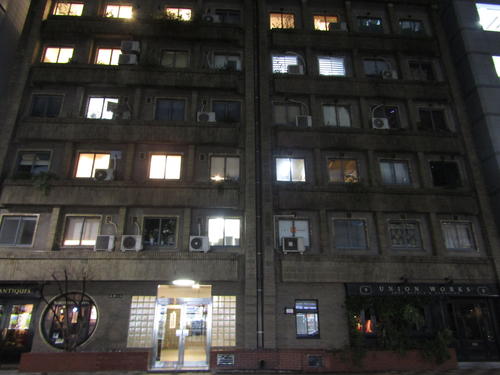
(Okuno Building, a luxury designer condominium completed in 1932)
In other words, there are many immutable pure Japanese places, even as they change overseas (especially European countries) as examples.
From today's point of view, Japan's unique Historic buildings is located a little far from behind alleys and main streets.
I think it's an attractive place that can be called a "secluded gem" known to those who know it.![]()
In addition, there may be wonderful scenery "I couldn't see it unless I got lost."
It can be said that such unexpected excavations are the real pleasure of walking around the town.![]()
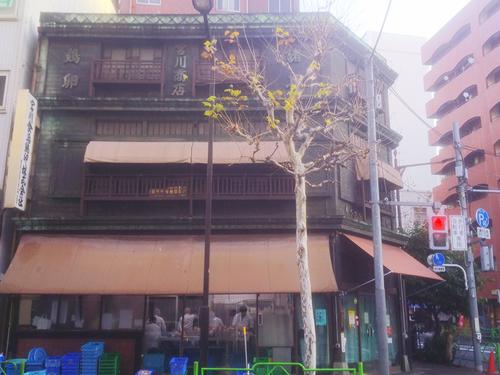
(Miyakawa poultry eggs, selected by Historic buildings, completed in 1929)
Sidmore's comment introduced this time is what modern tourists visiting Japan are looking for from Japan.
And I feel that it leads to what Japanese people who travel abroad are looking for.![]()
It's a good idea to go around the sights of the royal road listed in the guidebook.
The popularity of traditional culture experience tours and "traveling like living" type trips is also increasing.![]()
Also, rather than buying beautifully packaged souvenirs at shops like "The Souvenir Shop"
People have come to hear from locals that they want to buy something that has a reputation.
In that sense, it is necessary to consider what tourists visiting Japan are looking for.![]()
"Sidmore Japan Journey" also describes the state of the army and Tsukiji foreign settlements at that time.
There is a record from the perspective of overseas people.
I'm sorry that there is no collection in the Chuo City Library, but it's a book worth reading.![]()
Next time, I will take up the Shintomiza seen by Sidmore!
[References]
Eliza R. Sidmore (author) / Katsuhisa Tonosaki (translation) "Sidmore Japan Journey" (Kodansha, 2002).
Chuo-ku Tourism Association Official Blog
Chuo-ku Tourism Association correspondent blog
Introducing Chuo-ku's seasonal information by sightseeing volunteer members who passed the Chuo-ku Tourism Association's Chuo-ku Tourism Certification and registered as correspondents.
List of AuthorsRecent blog post
|
What is the unexpected excavations unrelated to changes in the Chuo-ku (2) era as seen by Sidmore?
◆ Kyobashi Monogatari 4-From the Earthquake to Showa
The fourth episode of Kyobashi Monogatari. It's a continuation from the last time. Until the last time → Kyobashi Monogatari [1] [2] [3]
This is a postcard depicting the cityscape of Minami Temmacho, which had undergone a major transformation in the Taisho era (around 1921). The postcard says "Kyobashi-dori". Currently, it is called "Chuo-dori", but in old postcards, "Ginza-dori", "Kyobashi-dori" and "Nihonbashi-dori" were printed for each location. The names of each street were sent to all over the country with photos, and the development of Tokyo was visually understood. However, Tokyo was attacked by an event on September 1, 1923.
The school on this day was the opening ceremony, Saturday, and the children were trying to eat lunch about their homes. The cause of the damage was fires that occurred in various places after that, rather than the collapse of buildings due to the shaking of the 11:58 earthquake. Minami Temmacho is no exception, and the city is burned.
I see it from around Konyabashi, a little upstream of the Kyobashi River. The daikon riverbank at the end of the revetment of the Kyobashi River has been burned down. However, the large building in Minami Temmacho seems to have not collapsed. I'll get close to Kyobashi and check it. The postcard below shows the bridge and Minami Temmacho over the Kyobashi River from the Ginza side. Kyobashi survived the collapse, and the buildings of the tall Daiichi Mutual Hall in the center, Daido Life on the left, 34 Bank, and Toyokuni Bank on the right have not collapsed. The "three dome roofs" remained. In the Great Kanto Earthquake, many famous buildings collapsed. Ryounkaku (Asakusa 12th floor), which was said to be the tallest, was also damaged, and the first mutual hall in Minami Temmacho replaces the tallest building in this area. After that, the first mutual hall will look at Tokyo, which is recovering, from the highest point.
I will check the status of the damage caused by the earthquake from the first mutual hall. First of all, the opposite side of Ginza is the Nihonbashi area. The town directly below is the current Kyobashi 2-chome, Minami Temmacho 2-3-chome at that time. Although it turned into a pile of rubble, the Chiyoda-kan, which was completed three months before the earthquake, did not collapse. The postcard was created by Chiyoda Life Insurance Co. We sent postcards to various places and told them that the head office building had not fallen. It seems that the purpose was to make the contractor feel safe. At that time, there was no radio yet. As information was complicated in various places, postcards functioned greatly as a media that visually conveys information about the earthquake disaster.
On the other hand. This postcard is also a postcard made by Dai-ichi Life Insurance. It will be Kyobashi-dori on September 28, taken from around Chiyoda-kan. Something like huts and tents are built on the side of the road, and many people gather on the street. It can be seen that it is chaotic, but the power of those who are confronting reconstruction is also transmitted.
Let's check the Ginza area from the first mutual hall. Although rubble is piled up on the side of Kyobashi at the lower right, you can see that the building on the banks of the radish behind it is beginning to build something like Kariya. In Hashigami, you can see things like wagons and rear cars, and it is in the middle of restoration. The large building on the right side of the street is the Okura Gumi Main Building, which survived the earthquake. On the left side of the street, you can see a little Matsuya's steel frame, which will open later.
Ginza Street was a luxury city that developed from brick streets in Meiji period. But here the end of that era was announced, and the start of a new city was started.
I'll check the status of other buildings. It is the direction where you can see Tokyo Station in the back. You can also see how the houses are being built and reconstructed.
Due to the Great East Japan Earthquake, the marriage ceremony of His Imperial Highness Higashimiya (later Emperor Showa), which was scheduled to be held in November, has been postponed. He married on January 26 of the following year, celebrated on June 5, and a celebration tower will be built in Kyobashi. It is a photo of the Ginza area from Minami Temmacho, but you can see that the new cityscape of Ginza has already been shaped. I guess this celebration gave new hope and courage to Ginza Street, which is recovering. Five months later, the department store Matsuzakaya will open in Owaricho on Ginza Street.
On the other hand, Minami Temmacho. Since the large building in this neighborhood did not collapse, from the Ginza side, it seems that the scenery has hardly changed before the earthquake. Actually looking at the postcard, I had a hard time identifying the times before or after the earthquake. The clues were the letters written on the postcard and the ballaque-style building in front of the left hand. If this building is shown, it will be the scenery of Minami Temmacho after the earthquake.
It was around this time that a lot of shared buses came to be seen. This is the scenery of 1926. This year was also the year when the radio broadcasting started.
Despite the earthquake, the cityscape of Minami Temmacho, which left the scent of the Taisho era, will enter the era of Showa as if nothing had happened. From the point of view of the city of Ginza, which looks for the best way to be reborn, the streets of Minami Temmacho are nostalgic, seeming to be watching over, and may have looked strange.
But here suddenly a change occurred in the cityscape of Minami Temmacho. The dome roof of the Daido Life Building on the left stretched out.
This Tongari roof is as if the design of the main pillar of Kyobashi in the Taisho era has been transferred. When replacing the bridge, it would not mean that foresee the future and made the design of the main pillar into a Tongari style. If anything, the city of Minami Temmacho seems to be returning to the old days rather than being reborn.
In any case, I think it is true that the cityscape of Minami Temmacho and the design of Kyobashi have been integrated. In this way, the cityscape of Minami Temmacho, which survived the Great Kanto Earthquake, inherited the atmosphere of the Taisho era as it was in the Showa era, and continued to watch the city of Ginza, which is recovering. Followed.
Literaries related to Chuo-ku
Hello, this is Minato kid. After the Meiji Restoration, modern literature was nurtured in our Chuo-ku. Newspapers were born one after another in Ginza Brick Street, and the information industry was developed. In addition, many cultural figures visited Chuo-ku and drew scenes of Chuo-ku in various works such as novels and plays. Today, I examined literary people who are closely related to Chuo-ku.
Kitamura Tokoku (Kitamura) Meiji 1st year-Meiji 27 (1868-1894) Literary critic and poet. Born in Odawara. In 1880 (1880), he moved to Tokyo Yazaemon-cho, Kyobashi-ku (currently Ginza 4-chome, Chuo-ku). Transferred to Yasuaki Elementary School. He is involved in the liberal rights movement set in Ginza. 1889 (1889) Announced "Shu Prison's Poet" and "Renna Song". Participated in the creation of the "Literature World" and presented numerous criticisms such as "Internal Life Theory". Toson Shimazaki (Shimazaki) Meiji 5-Showa 18 (1872-1943) Poet and novelist. Born in the house of Shoya in Nagano Prefecture. In 1881 (1881), he moved to Yariya-cho, Kyobashi-ku (currently Ginza 4-chome, Chuo-ku). He studied at Yasuaki Elementary School and graduated from Meiji Gakuin. Through the activities of the literary world, he learned Kitamura Toya and was deeply influenced. From 1907 (1907) to the following year, "Spring" was written at Kaikaikan (currently Tsukuda 3-chome, Chuo-ku), and his representative work "Before Dawn" was performed at Tsukiji Small Theater. Ryunosuke Akutagawa, Ryunosuke Meiji 25-Showa 2 (1892-1927) Noveler. Born in a milk ranch in 8-chome, Irifune-cho, Kyobashi-ku (currently Akashi-cho, Chuo-ku). Soon after birth, he moved to his mother's home in Honjo Ward. Graduated from Tokyo Imperial University. Entered the gate of Soseki Natsume and became a doujin of the third and fourth "Shinshicho". Representative works include "Rashomon", "Nas", "Hell thread", "Kappa".
Torahiko Koori (Koori Torahiko) Meiji 23-Daisho 13 (1890-1924) Playwright. Born in Minami Hatchobori 3-chome, Kyobashi-ku (currently Minato 1-chome, Chuo-ku). He entered the English Department of Tokyo Imperial University from Gakushuin. "Shirakaba." In 1913 (1913), "Dojo-ji Temple" will be performed at Jiyu Theater. He traveled to Europe and wrote "Tetsuwa" and "Yoshichoki". It was performed in London and gained popularity. Bosha Kawabata (Kawabata) Meiji 30-Showa 16 (1897-1941) A poet. Born in 2-chome Kakigaracho, Nihonbashi-ku (currently Nihonbashi Ningyocho 2-chome, Chuo-ku). He became a painter and studied under Ryusei Kishida. Because of his illness, he devoted himself to Haiku and studied under Kyoshi Takahama. "grayheaded cuckoo," he said. There are "Bosha Kawabata Kushu", "Kagon" and "Shirachi" in the haiku collection. Kayo Yamagishi (Kayo Yamagishi) Meiji 9-Showa 20 (1876-1945) Noveler. Born in Aburamachi, Nihonbashi-ku (currently Nihonbashiodenmacho). He went to Tokyo College of Technology (the predecessor of Waseda University) and studied under Shoyo Tsubouchi. Later he entered the gate of Koyo Ozaki. "Ikuriyusha" is the same person. Announced "Nihonbashi Literature" based on the townscape where he was born and raised, such as wholesale district and geisha district. "The beginning of service", "the temperament of this life", etc. Later, he worked for the Yomiuri Shimbun as a commentator. Shigure Hasegawa (Shigure Hasegawa) Meiji 12-Showa 16 (1879-1941) Kabuki screenwriter, legendary writer, novelist, essayist. Born in Aburamachi, Nihonbashi-ku (currently Nihonbashiodenmacho). Debuted in 1905 (1905) with "Umishione". He builds his position in the biography of women. In 1933 (1933), he published the magazine "Keiku" and sent many female writers and critics to the world. In his essay, "Old Mon Nihonbashi" is a masterpiece. Kanajo Hasegawa (Hasegawa) Meiji 19-Showa 44 (1887-1969) A poet. Born in Honishi-cho, Nihonbashi-ku (currently Nihonbashi 2-chome). Supports the magazine "Kareno" presided over by her husband, Kaizo Tomita (Reiyoshi Hasegawa). He studied under Kyoshi Takahama. In 1930 (1930), he launched "Suimei" and became a pioneer of female poets. The phrasebook includes "Ametsuki" and "Lake Flute", and the essays include "Koyuki" and "Yukiki". Junichirou Tanizaki (Tanizaki) Meiji 19-Showa 40 (1886-1965) Born in Kakigara-cho, Nihonbashi-ku (currently Nihonbashi Ningyocho 1-chome, Chuo-ku). He studied at Sakamoto Elementary School. Representative works such as "tattoo", "love of chijin", and "Shunkinsho", which are considered to be aesthetics. He also published naturalist literature and modern translations of The Tale of Genji. "Hosoyuki" published after the war is considered to be the ultimate in Tanizaki literature. Michizo Tachihara (Michizo Tachihara) Taisho 3-Showa 14 (1914-1939) A poet. Architect. Born in 3-chome, Tachibanacho, Nihonbashi-ku (currently Nihonbashi Hisamatsucho, Chuo-ku). He studied at Hisamatsu Elementary School and graduated from the Department of Architecture, Faculty of Engineering, Tokyo Imperial University. I liked tanka poetry since I was a teenager and was influenced by Tatsuo Hori. Participated in the first publication of the poetry magazine "Shiki". Announced a collection of poems "Some by Kayakusa" and "Poetry of dawn and evening". Received the 1st Chuya Nakahara Award. It was interesting to note that literary activities that pioneered the times were unfolded here in Chuo-ku, as well as that each literary person was connected in Chuo-ku. In addition, many works were born in Chuo-ku, and the appearance of the town at that time is alive in the story, and conveys the scene now. It remains in many films, not only in novels and plays, but also in films. (The photo shows the "Kitamura Toya / Toson Shimazaki Monument" built at Yasuaki Elementary School and Yanagi Nisei in Ginza) Correspondent Minato kid, Chuo-ku Tourism Association
No. 34 February 11, 2019 The sweets collection, this year's highlight is ...
Speaking of Valentine's Day, I think the image of "sweet and sour
Two exhibitions at LIXIL Gallery
I would like to introduce two of the exhibitions being held at LIXIL Gallery in Kyobashi. One is the repair of the Fujiya Hotel. Fujiya Hotel, a landmark in Hakone. Classic hotels, which celebrated its 140th anniversary in 2018, are well known for their many fans who want to stay again once. This time, "Hakone has a corporate culture that can be covered by everything in-house since its establishment. In the past, there were car companies and ranches, and not only laundry but also daily printed materials on their own. The times have often changed in the wave of efficiency in circulation, but it is still the repair and repair of Fujiya Hotel's architecture and furniture and fixtures, as described in the pamphlet. It is a slightly different exhibition focusing on the work of the hotel's "repair" job. First of all, the guest room "Hana Goten's Room Key", which is about 20x10cm. All the information cards in the hotel are also on display of the printing type used at that time, from the work of "Maintenance" to the menu card.
The other is the 18th edition of the “Future of Creation” series, “What is“ Kogei ”?...It's an exhibition. Twelve works of ceramics, dyeing and weaving, metalwork, bamboo work, and kirikin by 12 contemporary craft artists, including two important cultural property holders (living national treasures), are exhibited. According to the supervisor Ryohei Miyata, "If we can ask what art is from the ground up by bringing together works with transmission power that make use of various materials and techniques....」
What a good day! I was surrounded by works and took up a luxurious time alone. We have received permission to post photos, so please enjoy the photos first, and then take a look at the venue. LIXIL Gallery 3-6-18 Kyobashi TEL 03-5250-6530 http://livingculture.lixil/gallery/ The last day of "Fujiya Hotel Maintenance" Saturday, February 23 "What is Kogei?...On the last day, March 19 (Tuesday) 10am-6pm
FUSION FACTORY Spring Glass Exhibition ~ Nihonbashi Kiya Main Store izutuki~
This is rosemary sea, where we cover "gifts and enjoy yourself" with tutorials. The long-established knives store Nihonbashi Kiya Main Store and Gallery izutuki are holding the "FUSION FACTORY Spring Glass Exhibition" from February 1st (Fri) to March 3rd (Sun). FUSION FACTORY's glass exhibition was held at the same time last year and in August last year, and this time we have a lot of wonderful glass works. New Hina doll, helmet decorations, objects from Seven Lucky Gods and Mount Fuji, and spring jewelry are exhibited and sold. Click here for the "FUSION FACTORY Summer Glass Exhibition" held last August. ⇒ /archive/2018/08/post-5486.html
We interviewed Emi Shimodaira (Megumi Shimodaira) of Noguchi Glass Fusion Factory Sales / Public Relations Co., Ltd. At the same time, I was taken care of by Kaneko manager of Kiya Nihonbashi Head Office. Then I would like to introduce some items. First of all, from the peach festival. All prices are tax-included. All images can be enlarged by clicks. Also, the inside of "" is Mr. Shimohira's words.
<Nishiki Hina> 270,000 yen (Usuhana Sakura) Three-stage decoration set Hina doll glass, three-tiered decorations, gorgeous. In fact, it has a pair of flowers and snow caves and a red cloth. "Other than the folding screen, you can wash with water. You can put it in a box neatly. You can also choose a folding screen.
Left: <Nishiki Hina> 54,000 yen of red smell (sitting) Right: <Nishiki Hina> Nishikidate (Tachi) 32,400 yen Nishiki, it is a woven fabric that represents a splendid pattern in many colors. It's Hina doll with a vivid dress.
Left: <Hina picture scroll> Aoi 27,000 yen Right: <Hina picture scroll> Cherry blossoms 27,000 yen Male chicks and female chicks nestled in the elegant story landscape. "It's the most popular.
Left: <Hina picture scroll> Hanayoi (Hanayoi) 21,600 yen Two people enjoy watching the cherry blossoms at night. Right: Kaoru Kaze Hina (Fukabina) 21,600 yen Hina doll's warm and gentle winds carry flowers and young leaves, making you feel the coming of spring.
Left: Ryusaibina 12,960 yen Hina doll colors vivid colors with flow lines. "It's the newest Hina doll." Right: Hakubina 12,960 yen "There are currently a total of six writers, including four women, including the president, and two men. There are rules that are easy to understand, and that the atmosphere does not become strange.
Left: Ume Hina 12,960 yen Hina doll, plum blossoms bloom. Right: Spring: 32,400 yen Maiko and others are dancing in connection with the seasonal atmosphere. "I'm inspired by the dance of Kyoto."
Left: Peach Decoration S 5,400 yen, M 8,640 yen The shiny glass expresses the texture of peaches beautifully. "This is also very popular. Some people are looking for it in the sense of protection against misfortune amulet." Right: Peach flower decoration 12,960 yen Seasonal chopstick rest Hayawarabi 1,080 yen, peach flower 1,620 yen, cherry blossom petals 804 yen, cherry blossom bud 1,296 yen, cherry blossom dumpling 1,080 yen Even if you add it to Hina doll, it will enhance the atmosphere. "I want you to decorate it with Hina doll."
Next is the gift of the Dango Festival. Left: <Rinpa-style water crest> Glass helmet 64,800 yen It is inspired by Rinpa's paintings and is expressed in glass. A golden helmet. "The Rinpa series is both in Hina doll and in sake ware." Right: Iris-colored helmet 54,000 yen A helmet that reflects the color of irises on glass.
Left: Ao helmet 39,096 yen It has a mysterious color like deep lake water. Right: Jade helmet: 32,400 yen A helmet of a transparent jade color.
Left: <Glass helmet> Amber 21,600 yen It is expressed in glass with a wish to grow robustly and finely. Right: <Glass helmet> Transparent 21,600 yen It's clear and modern.
Left: Shachihoko 43,200 yen "Ah, yes" is expressed by the expression of the left and right mouth. "I have plenty of gold leaf. It was very popular with overseas people. Right: Gold carp streamer 27,000 yen It is colored with bouncing carp and gold leaf. "It's a set of 3: dad, mom, and child."
Left: Iris decoration 12,600 yen, seasonal chopstick rest flower 1,620 yen / bud 1,296 yen Right: Chopstick rests for the season 1,620 yen each for green, red and blue In the same way, if you attach it to the helmet, it will enhance the atmosphere. "Even if you decorate it with the festival of Dango, as a chopstick rest."
Next is Seven Lucky Gods... From the top to the left, Ebisu 37,800 yen, Daikokuten 37,800 yen, Vaisravana 37,800 yen, Fukurokuju 32,400 yen, Benzaiten 43,200 yen, Kotobukijin 37,800 yen, and Hotei 37,800 yen. You can also set a glass and a Madler 21,600 yen for Ebisu at the front.
We're still there. Vases, sake ware, accessories, etc. Left: Aotake S 19,440 yen, M 32,400 yen, L 64,800 yen It is a flower vase with a beautiful green bamboo motif. Right: FP Monet plate 5,400 yen "FP" is the Feamas Picture Series (A famous picture series). The inspiration from the masterpiece is expressed in color.
Left: Glass accessories 4,320 yen to 10,800 yen Right: Earrings/earrings 3,240 yen to 7,560 yen The necklace top on the left in the left image is Wakatake KIMONO. The gorgeousness with a kimono motif is beautifully embodied with glass. The necklace top on the right of the left image is also FP. The image of a flower garden as a masterpiece of Klimt. Gustav Klimt was an Austrian painter around 1900 years ago. "The necklace is inspired by spring."
Left: 37,800 yen each for Namiura and Kaifu Kaisei This is a three-dimensional work of Ukiyo-e. A series of "Thirty-six Views of Mount Fuji" by Katsushika Hokusai. It is an object inspired by "Okinamiura, Kanagawa Prefecture" and "Kamikaze". Off the coast of Kanagawa Prefecture ... A painting of high waves like swallowing Fuji. A picture of a blue sky, white clouds, and red Fuji. Both are famous. "It will be a work that traps Hokusai's paintings so that you can see 360 degrees. ] Right: Fuji and couple hawk 21,600 yen I also introduced it during the "Summer Glass Exhibition" last August. Do you see two brown hawks flying over Fuji?
Left: 16,200 yen for Mount Fuji It was made as a flower vase with silver foil on glass shaped like Mount Fuji. "It's a single vase where the top of the mountain is empty." Right: Rinpa Unkai Monshu Set (Guizaki Sake Sashi) 37,800 yen It is inspired by Rinpa's paintings and is expressed in glass. Do you see the flow of clouds?
Left: 12,960 yen each for cold sake glass facing the Sea of Fuji Cloud Right: 16,200 yen each for red and blue It is likely to be a delicious liquor with a drink while looking at the auspicious Fuji.
Left: Folding fan (Ogimukou) Black 4,860 yen A fan-shaped orientation that is wide at the end. For a little dish. "It's a container where you can serve appetizers." Right: Glass Daruma Red, Charcoal and Green 10,800 yen An object in the shape of an auspicious daruma. It can be used as a single vase or hung with a special hook to decorate it. "If you have a small size, you can do it with a burner work on hand, but (things of a certain size) the accessories are also taken from the kiln in the same way as other glass works, so the size that can be wound is larger. It is made by winding a 1200-degree glass and cooled over a day in a kiln called a slow-cooling furnace. If it cools rapidly, the glass will break. Also, air may enter when it gets cold. It may expand and break. When I opened it, the color changed. 100% is quite difficult. One thing is free (even if there is a change)." If it is a product that is listed in the catalog, it seems good to be finished uniformly. Thank you very much, Mr. Shimohira. Click here for the website of Noguchi Glass Fusion Factory. ⇒ http://fusionfactory.shop-pro.jp/
Nihonbashi Kiya 2-2-1 Nihonbashi COREDO Muromachi 1st floor Exit A6 of Mitsukoshimae Station on the Tokyo Metro Hanzomon Line and Ginza Line. 03-3241-0110 Business hours 10:00 to 20:00 It's open except New Year's Day. Click here for Kiya's website. ⇒ http://www.kiya-hamono.co.jp/
|
MenuArchiveLinks |
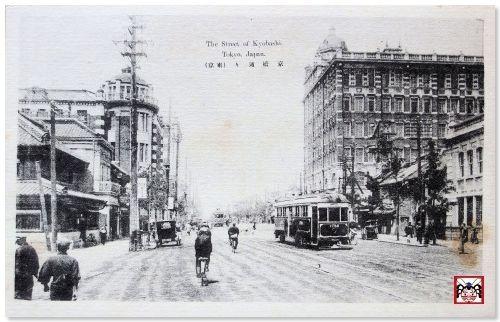
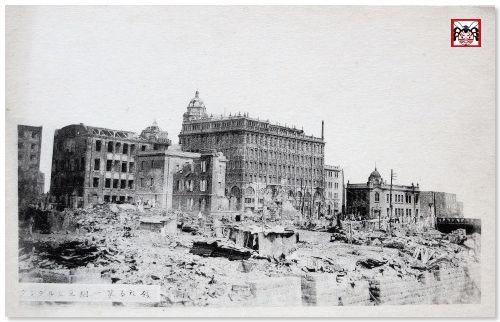
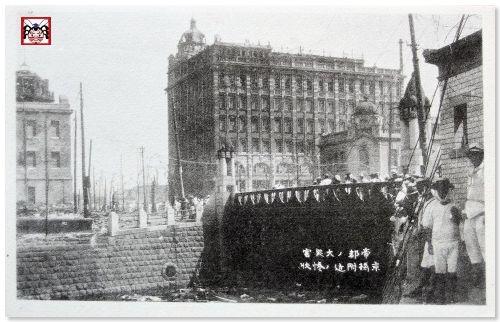
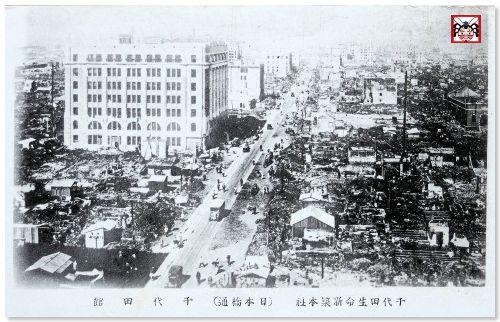
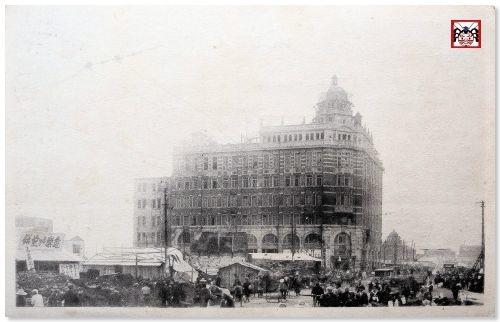
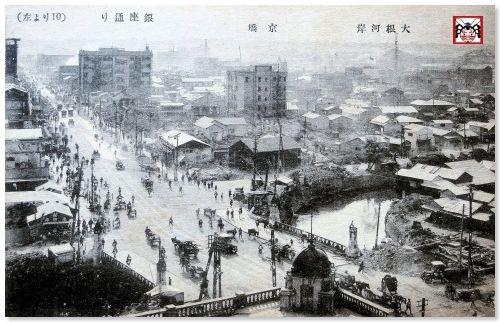
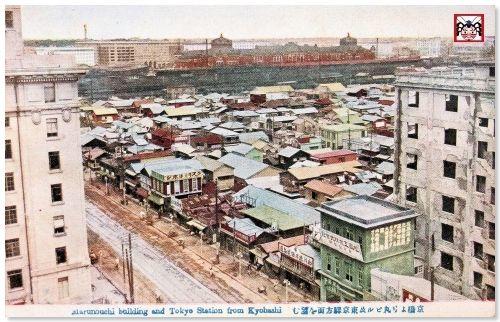 The building on the left is Katakura-kan, and the right is star pharmaceutical with a diagonal window. The Katakura-kan will continue to expand and grow, but the Hoshi Pharmaceutical building has been damaged and will be rebuilt after this. The Kajibashi-dori, which runs in the middle, will be widened by the earthquake reconstruction project.
The building on the left is Katakura-kan, and the right is star pharmaceutical with a diagonal window. The Katakura-kan will continue to expand and grow, but the Hoshi Pharmaceutical building has been damaged and will be rebuilt after this. The Kajibashi-dori, which runs in the middle, will be widened by the earthquake reconstruction project.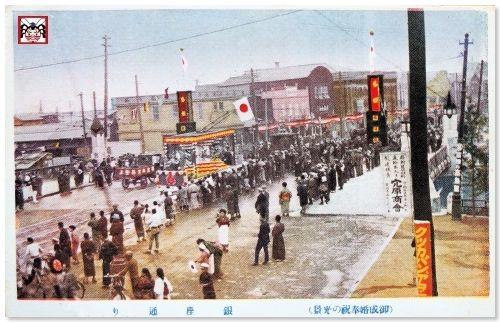

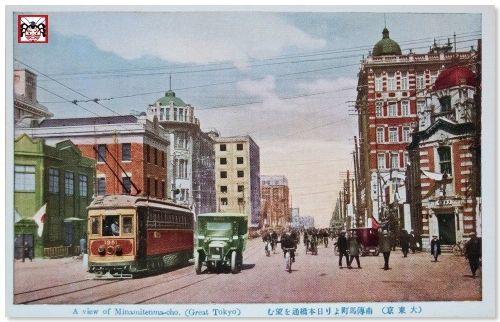
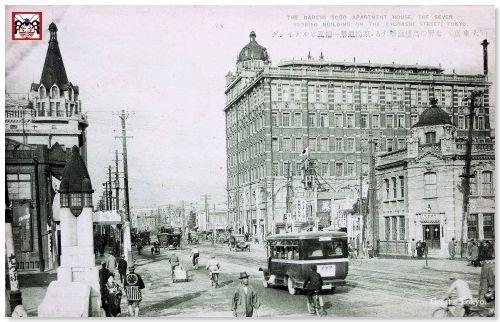
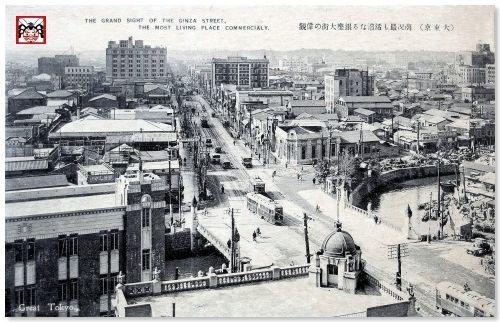
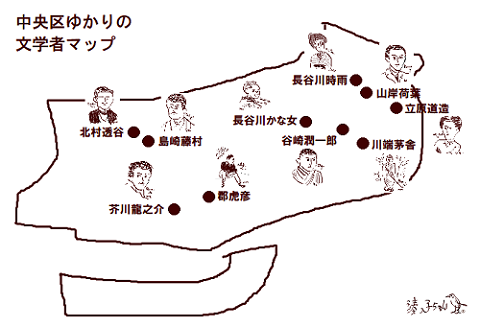
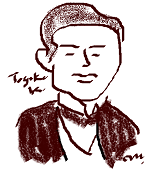
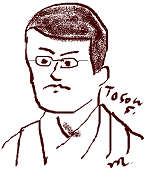
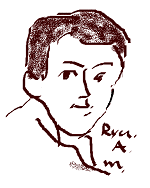
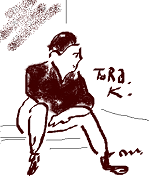
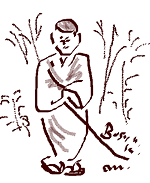
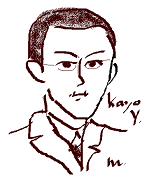
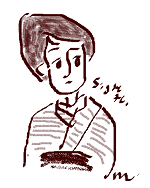
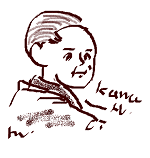
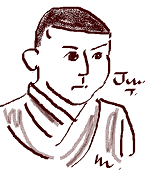
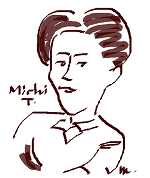
 He was born and raised in Chuo-ku and represents the times.
He was born and raised in Chuo-ku and represents the times.
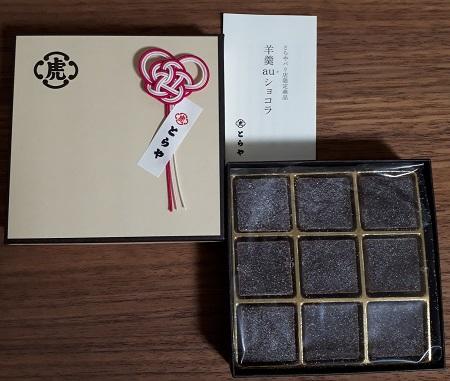

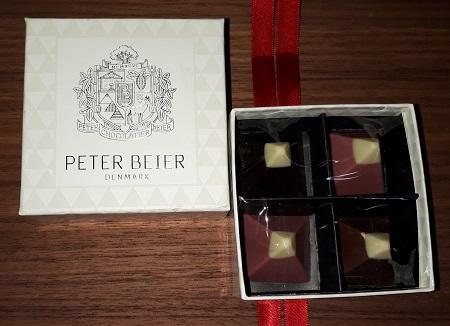
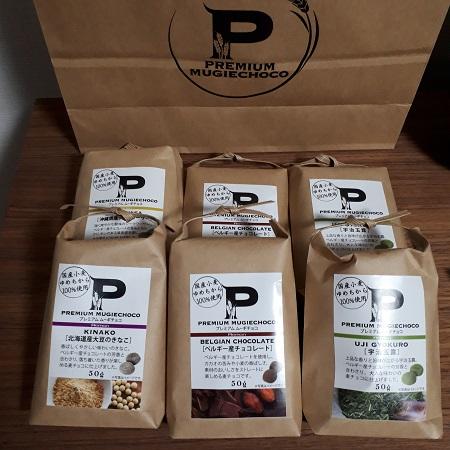 Many other brands, a variety of ways of enjoying, taste, sight, smell, hearing, and touch are elaborated enough to mobilize as much as possible, and the more you know, the deeper you notice.
Many other brands, a variety of ways of enjoying, taste, sight, smell, hearing, and touch are elaborated enough to mobilize as much as possible, and the more you know, the deeper you notice.